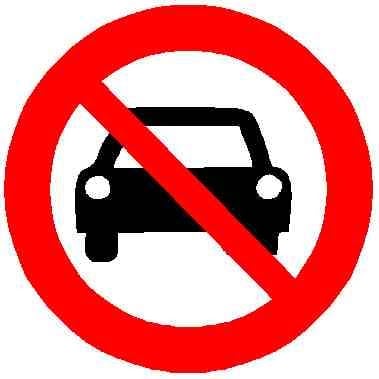by Karl Jilg, commissioned by the Swedish Road Administration.
Seattle actually briefly had the opposite of this for a while.
After the Great Fire, the city wanted to use the reconstruction as an opportunity to regrade Pioneer Square to make it less steep. Because the city only owned the land under the street (sidewalks belonged to the landowners), they just regraded the streets and left the rest up to the landowners.
This created an awkward period where landowners had sidewalks that met with an immediate wall that was supporting the street at the new level. This means pedestrians had to climb ladders to cross the street.
It also gave property owners double the store front as they kept the entrances at the original level and built a new entrances at the new street level creating a double-decker sidewalk. Many of those subterranean establishments turned into speakeasies during prohibition and can still be visited today as part of the Seattle Underground Tour.
Here’s an illustration:

Sounds neat and dangerous!
Yeah that’s the sort of thing that I can see being a weird thing that sticks around in a city
Atlanta did a kind of similar thing when they raised the streets downtown on viaducts to eliminate a bunch of level grade crossings over a big rail yard. It also had speakeasys during Prohibition, then was abandoned until the '60s. It’s been variously a tourist attraction/entertainment district/shopping mall since then, although it’s struggled economically and the city keeps trying to “revitalize” it.
That is what it feels like sometimes. Pretty well made.
Totally. It really captures how alien it is to put up with these hazards cutting through every part of our cities
Man that’s brilliant




